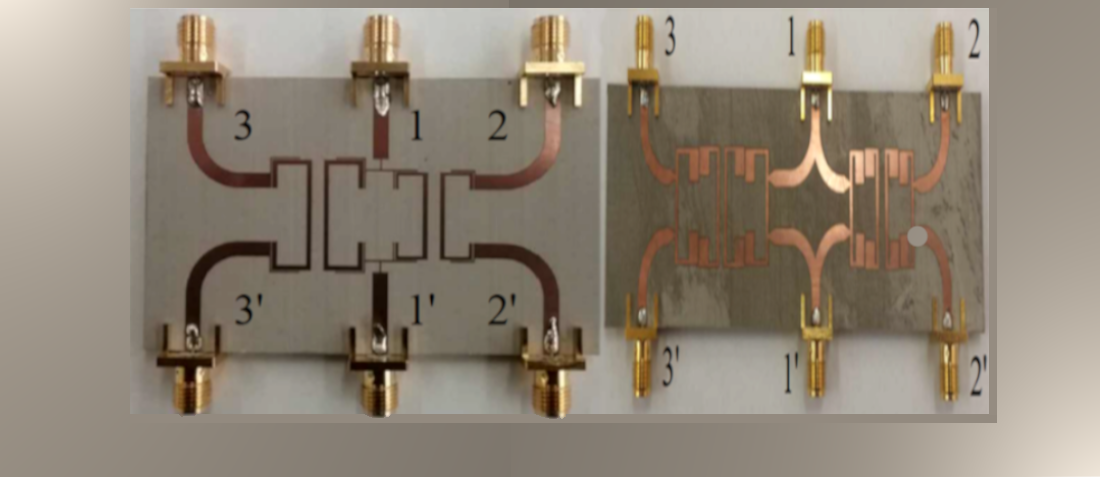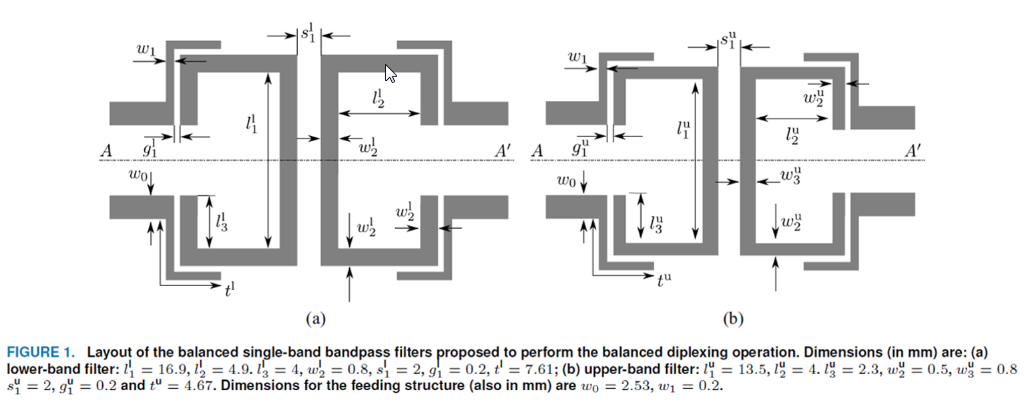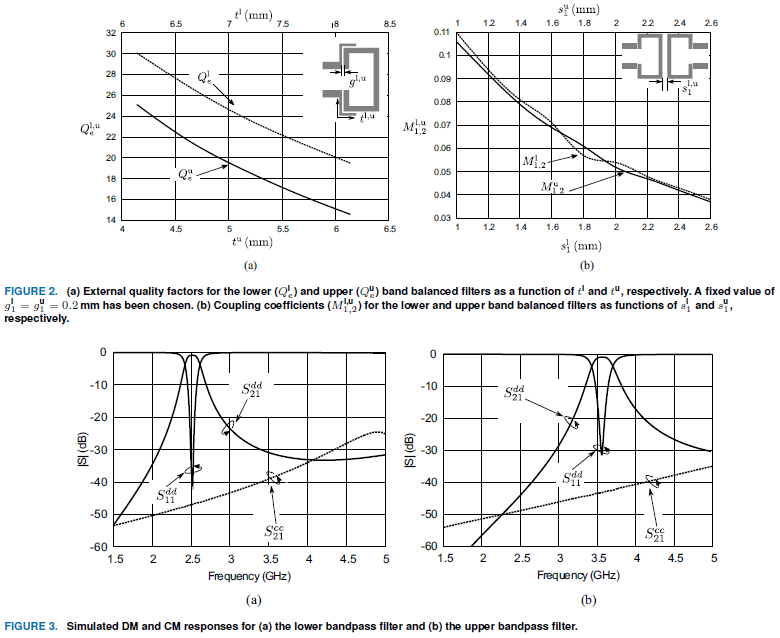
Diplexer Based on Coupled Resonators
- Posted by Aintzane Lujambio Genua
- On April 30, 2022
- 0
Diplexer Based on Magnetically Coupled Resonators Balanced-to-Balanced Microstrip
The design of balanced diplexers deserves more attention. To the authors’ knowledge, two different kind of diplexers with differential operation have been proposed in the literature: balun diplexers, and balanced diplexers.
Diplexer is the use of differential (or balanced) digital and analog circuits for information processing has increased in recent years . When transmitting high-speed electrical signals, both the electromagnetic (EM) fields generated by the transmitted signals and the ground plane return current might cause electrical interference on adjacent circuits. Moreover, with the trend of digital systems to move to lower operating voltage, logic signal swing and noise margin also decrease, thus deteriorating the noise immunity of the digital system.
Due to these and other reasons, differential signaling is becoming more and more popular in both digital and analog applications. Indeed, several common low-voltage communication standards (such as USB, Serial ATA or HDMI, among others) make use of differential signals. Note that, for the same operating voltage level, differential signals provide much lower return current on the ground plane, better immunity to noise, less electromagnetic interference (EMI) and less cross-talk when compared with conventional single-ended implementations. Also differential signals are not affected by external noise, which mainly couples to the common mode component of the total voltage.
However, although ideal differential signals are supposed to solve all the above-mentioned problems, in a realistic scenario, where the circuit symmetry has been slightly broken or the applied signals present some level of time skew, the presence of common-mode (CM) noise is unavoidable. This CM noise is the source of most of the radiation and EMI problems. Hence, differential circuits should be designed in such a way that CM is rejected and, at the same time, the differential-mode (DM) signal is not perturbed, thus preserving its integrity within the frequency range of interest.
In this context, many microwave differential (or balanced) devices have been proposed in the literature, including common mode filters based on artificial differential lines, balanced bandpass filters, power dividers / combiners, diplexers and passive equalizers. Among the aforementioned balanced devices, common mode filters and balanced bandpass filters are, by far, the ones that have attracted more attention in the literature. However, much less research has been carried out in the area of microwave differential diplexers. Given the current trends towards multi- band systems, diplexers offer a very interesting solution to increase the compactness and to reduce the cost of RF front- ends.

Balun diplexers are composed of a single-ended input port and two balanced output ports (or vice versa). In a balanced diplexer both input and output channels are differential in nature (we will refer to this type of diplexers as Balanced-to-Balanced (B-B) diplexers). In all cases, the most common procedure to perform differential diplexing operation consists in the design of two different filters (single-ended or balanced) connected to a common input port (which, again, can be single-ended or balanced).
Good DM transmission properties, high channel-to-channel isolation and weak CM transmission are simultaneously required. Several techniques have been used to accomplish the aforementioned goals to a greater or lesser extent. For example, the balun diplexers in makes use of bandpass filters whose resonators have DM and CM resonance frequencies far apart from each other. The filters are connected to a common input by means of a T-junction, providing good DM and CM responses with high isolation.
However, this configuration presents an intricate geometry, which complicates the design process. This idea was extended to design a balun diplexer and a balanced diplexer whose resonators require ground connection through via holes. This feature introduces additional complexity in the design and manufacturing process.
The same concept is used for the design of balanced diplexers, with the novelty of the introduction of transmission zeros (TZs) associated with the existence of mutual couplings between stub loaded in- put/output lines. Although DM selectivity and isolation are good, CM suppression is poor due to the extra coupling path provided by the input/output lines.
To solve this problem, the structure is modified by introducing shorted stubs along the resonators symmetry plane. The length of the stubs is adjusted so as to introduce a common mode TZ at the center frequency of each channel passband. The main drawback of this technique is, once again, the requirement of using via holes.
The use of hybrid microstrip/slot line resonators prevents CM transmission and allows for the design of balun and balanced diplexers with good DM performance and high isolation levels. However, in practical applications, ground planes without slots are preferred to reduce radiation losses and possible electromagnetic compatibility (EMC) issues. Very recently, the authors of this contribution have presented a B-B diplexer based on edge-coupled split ring resonators based filters.

This design provides both good DM and CM response with a very compact design, at the expense of being a complicated structure where a sophisticated excitation mechanism is required. Finally, two different B-B diplexers using Chebyshev responses are presented based on dual mode resonators with magnetic coupling and microstrip slotline coupling schemes.
Although good performance within the passbands is obtained for both DM and CM, the proposed structures exhibit a relatively large electrical size. In addition, rather poor channel isolation is observed, and the structure with magnetic coupling suffers from CM resonances in the out-of-band region, thusdegrading the CM performance in the upper frequency region of the spectrum. To end this section, it is worth mentioning that some works on balanced quad-band diplexers making use of the techniques mentioned above have recently been reported.
In the full paper below, two novel balanced diplexers are proposed which are based on open loop (prototype I) and FSIRs (prototype II) balanced single band bandpass filters. It will be shown how the use of a well known design methodology for coupled resonator filters makes it possible the fabrication of a compact and high-performance balanced diplexer by joining the two balanced filters to a common balanced input.
The paper isorganized as follows: in section II the first diplexer prototype, based on two second order coupled open-loop resonators bal- anced filters, is presented. The second prototype, based on a couple of fourth order coupled stepped-impedance resonators (FSIRs) balanced filters, is presented in section III. Finally, some conclusions are provided in section IV to summarize the advantages of the proposed approach.
Conclusions
In this paper, two new balanced-to-balanced diplexers are presented in microstrip technology. Prototype I is composed of two balanced bandpass filters based on magnetically coupled open-loop resonators. Prototype II is based on two balanced bandpass filters designed using magnetically coupled stepped-impedade resonators.
The design process in both cases is simple and straightforward. Basically, it consists in designing each filter independently, with their desired performances, and then joining them to the same differential input by means of a T-shaped connecting transmission line path. The length of each arm of the T-junction must be tuned to provide a good level of return loss in the two passbands.
Design curves can be generated from electromagnetic simulations taking into account the presence of the two resonators. This tuning process can be easily achieved with low computational cost. Measured results confirm the benefits of the proposed idea.
Finally, when compared with previous contributions, prototype I offers one of the highest level of compactness and common-mode rejection ratio, while still being very competitive in terms of the other relevant electrical parameters. Prototype II provides the lowest ratio between center frequencies while conserving a competitive compactness in spite of the high-order filters used in the design. Good roll-off is observed in each channel for this prototype without the need of using complex transfer functions.
This work has been supported in part by the Spanish Ministerio de Economía y Competitividad with European Union FEDER Funds (contracts TEC2013-41913-P, TEC2016-75650-R, and TEC2017-84724-P), by the Spanish Junta de Andalucía (project P12-TIC- 1435), and by Generalitat de Catalunya (contract 2014SGR-157).
GET IN TOUCH TODAY!
Do you have questions? Contact us!
- Diplexer Based on Coupled Resonators - April 30, 2022
- Is a Compact Balanced-to-Balanced Diplexer a good Differential Mode? - October 14, 2021
- How are the degolding and rettinning processes in EEE parts done - October 27, 2020


0 comments on Diplexer Based on Coupled Resonators